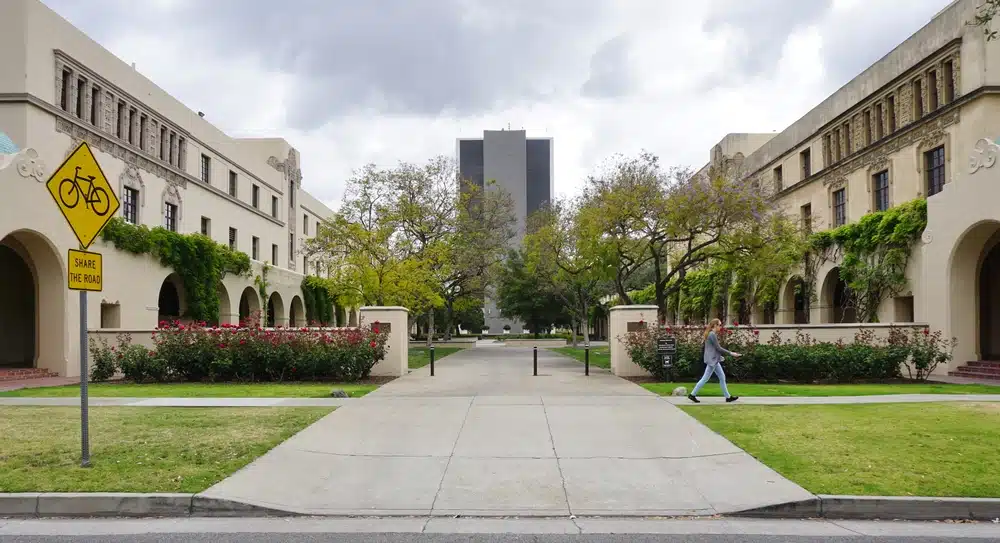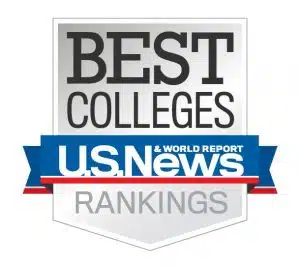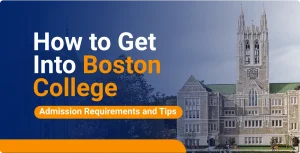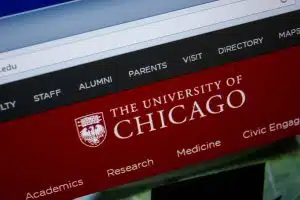The California Institute of Technology (Caltech) has earned its reputation as the hardest school to get into in the U.S. For the Class of 2028, Caltech’s acceptance rate was a mere 2.3%! That’s right—out of thousands of highly qualified applicants, only a sliver made the cut.
In this guide, we’ll unpack everything you need to know about Caltech’s acceptance rate, how it’s changed over the years, and how it stacks up against other top-tier schools. We’ll also give you tips to help boost your odds, break down important deadlines, and share insights into transfer and waitlist stats.
- What Is Caltech’s Acceptance Rate?
- Caltech Acceptance Rate Trends
- Caltech Regular Decision Acceptance Rate
- Caltech Early Action Acceptance Rate
- How to Get Accepted into Caltech
- Caltech Transfer Acceptance Rate
- Caltech Waitlist Acceptance Rate
- Frequently Asked Questions
- Takeaways
What Is Caltech’s Acceptance Rate?
Caltech’s admissions process is about as tough as it gets. Out of 13,863 applicants for the Class of 2028, only 315 were admitted, resulting in an extremely low 2.3% acceptance rate. That’s a nearly 1% drop from the previous year’s acceptance rate of 3.1%. Meaning, the competition isn’t easing up anytime soon.
Unlike some schools, Caltech keeps the specifics of its Early Action (EA) and Regular Decision (RD) admissions under wraps. However, Caltech officially states that its admit rate is under 5% for both routes:
| Application Type | Total Applications | Accepted | Acceptance Rate |
| Regular Decision | Officially undisclosed | Officially undisclosed | <5% |
| Early Decision | Officially undisclosed | Officially undisclosed | <5% |
| Overall | 13,863 | 315 | 2.3% |
The difference between the two is negligible, so no matter how you apply, the bar is sky-high. And with an overall acceptance rate of 2.3%, it’s reasonable to assume that both EA and RD applicants face similarly steep odds.
Caltech yield rate
Caltech’s yield rate—a measure of how many admitted students choose to enroll—is a remarkable 70.5%. Of the 315 students who got an offer for the Class of 2028, 222 said yes.
For context, the national average yield rate for four-year not-for-profit colleges was just 30% in fall 2022, with private schools averaging 33% and public ones trailing at 25%. Caltech’s 70.5% yield reflects its undeniable appeal, especially to students passionate about STEM fields.
For prospective applicants, this high yield rate means two things: the competition to get in is fierce, and once students are in, they’re rarely turning it down. If you’re aiming for Caltech, you’re not just competing with thousands of applicants—you’re competing against some of the most committed and qualified students in the world.
Caltech Acceptance Rate Trends
Over the past decade, the Caltech acceptance rate has been in free fall, reaching a record low with the Class of 2028. Take a look at Caltech’s admissions data:
| Caltech Class | Total Applications | Total Admitted Students | Overall Acceptance Rate |
| 2028 | 13,863 | 315 | 2.3% |
| 2027 | 13,136 | 412 | 3.1% |
| 2026 | 16,626 | 448 | 2.7% |
| 2025 | 13,026 | 510 | 3.9% |
| 2024 | 8,007 | 536 | 6.7% |
| 2023 | 8,367 | 537 | 6.4% |
| 2022 | 8,208 | 543 | 6.6% |
| 2021 | 7,339 | 568 | 7.7% |
| 2020 | 6,855 | 553 | 8.1% |
| 2019 | 6,506 | 573 | 8.8% |
Applications have nearly doubled since 2019, going from 6,506 to a staggering 13,863 for the Class of 2028. At the same time, the acceptance rate has dropped from 8.8% in 2019 to an almost impossibly low 2.3%. That’s a tiny slice of the most talented students in the world making the cut.
The numbers tell a clear story: more students are applying, but fewer are getting in, as Caltech sticks to its rigorous academic standards.
So, what’s behind this sharp decline?
- A boom in STEM interest. STEM education is hotter than ever, and Caltech’s reputation as a global leader in science and engineering has drawn even more attention.
- Tiny class sizes. Caltech intentionally keeps its classes small (think student-faculty ratio of 3:1). While more students apply, the number of available spots stays consistent, driving acceptance rates lower.
- Test-optional policies. The pandemic-era test-optional policies opened the door to more applicants, but with Caltech reinstating its testing requirements, the competition remains fierce.
This trend highlights Caltech’s growing prestige but also the brutal reality of standing out in an applicant pool this competitive.
Caltech acceptance rate vs Ivy League schools
When it comes to selectivity, Caltech leaves even the Ivy League in the dust. For the Class of 2028, Caltech’s acceptance rate of 2.3% is lower than that of any Ivy League school:
| Ivy League School | Acceptance Rate (Class of 2028) |
| Harvard University | 3.6% |
| Yale University | 3.7% |
| Columbia University | 3.85% |
| Princeton University | 4.6% |
| Brown University | 5.2% |
| Dartmouth College | 5.3% |
| University of Pennsylvania | 5.4% |
| Cornell University | 8.4% |
While the Ivy League is famous for its exclusivity, Caltech’s numbers reflect a different level of challenge. Often dubbed a “Hidden Ivy,” Caltech stands apart with its laser focus on STEM innovation and research. Its combination of world-class academics, cutting-edge opportunities, and small class sizes makes it a dream school for aspiring scientists and engineers.
For applicants, the message is clear: preparing for Caltech admissions requires the same, if not more, effort than applying to the Ivy League. The ultra-low Caltech acceptance rate should be a wake-up call to bring your A-game.
Caltech Regular Decision Acceptance Rate
Caltech doesn’t break down its acceptance rates for Regular Decision, but they’ve made one thing clear: both Regular Decision (RD) and Early Action (EA) are incredibly selective, with admit rates below 5%. For the Class of 2028, the overall Caltech acceptance rate was just 2.3%, making it the hardest school to get into in the U.S.
While specific numbers for RD aren’t available, you can assume the competition is just as fierce, regardless of how you apply. Whether you go for RD or EA, the odds are slim, so your application has to be flawless.
Caltech Regular Decision deadline and notification date
If you’re applying through Regular Decision, mark your calendar: the application deadline is January 3, with decisions coming out in mid-March. If you’re lucky enough to get in, you’ll need to confirm your spot by May 1, which is the National Decision Day for colleges.
These timelines give you just enough breathing room to finish your application while leaving time to consider your options once decisions roll in.
Caltech Early Action Acceptance Rate
Caltech doesn’t release specific Early Action (EA) acceptance rates. All they’ve shared is that it’s under 5%, just as brutal as Regular Decision (RD). For the Class of 2028, the overall Caltech acceptance rate was a mere 2.3%—the lowest in the country—so don’t expect EA to offer much of a statistical edge.
That said, EA might be the right choice if you’re genuinely excited about Caltech and meet a few key criteria:
- You’re genuinely excited about the idea of going to Caltech.
- You’ve taken the required coursework in calculus, chemistry, and physics.
- You’ve put together a strong application by November 1.
Caltech’s Early Action policy
Caltech’s Early Action pathway lets you apply early, but it isn’t your typical EA. It operates under a Restrictive Early Action (REA) policy.
While REA isn’t binding (you’re not locked into attending if admitted), it does come with some strings. You can’t apply EA or Early Decision to other U.S. schools, though public universities and international institutions are exceptions.
This setup allows you to show Caltech you’re serious about attending while still giving you room to weigh financial aid offers and other RD options.
If you’re ready to meet the early deadline and want some peace of mind about hearing back sooner, REA is a smart choice—just know it’s not an automatic leg up.
Caltech Early Action deadline and notification date
If you’re going for Caltech’s REA, the application deadline is November 1 (with supplemental materials due by November 6). The notification date is mid-December. Admitted students have until May 1 to confirm their enrollment.
Remember, compare financial aid packages and explore other opportunities before making your final call. But with a Caltech acceptance rate this low, your application has to be rock-solid to make it through the gauntlet.
How to Get Accepted into Caltech
Applying to Caltech means you’ll use either the Common Application or the QuestBridge Application—both get the job done, so pick the one that works best for you. These platforms also make it easier to keep tabs on your progress and ensure you don’t miss any deadlines.
Caltech’s admissions process is holistic, meaning they’re not just looking at your stats. They want to know who you are as a student and as a person. Here’s how to rise to their high standards:
Target GPA
Caltech doesn’t publish a GPA cutoff, but the averages tell the story. Most admitted students have a GPA around 4.2, boosted by weighted grades from advanced courses like AP or IB. For the Class of 2028, 89% of admitted students were in the top 10% of their graduating class.
To stay competitive, aim for a 4.2 or higher, but don’t just chase numbers. Caltech cares about what’s behind those grades—especially if you’re excelling in tough STEM classes like advanced math, chemistry, and physics. Show them you can thrive in challenging academic environments.
Target test scores
Caltech is back to requiring standardized tests for first-year applicants, and high scores can set you apart. Whether you’re submitting the SAT or ACT, focus on nailing the STEM-related sections.
Here’s what the scores for admitted students typically look like:
| Standardized Test | 25th Percentile Score | 50th Percentile Score | 75th Percentile Score |
| SAT | 1530 | 1545 | 1570 |
| ACT | 35 | 35 | 36 |
If you’re aiming for the SAT, you’ll want to hit at least 1570, and for the ACT, go for a composite score of 36. A perfect or near-perfect score in STEM sections is particularly important to show you can handle Caltech’s rigorous curriculum.
Other requirements
If grades and testing aren’t your strongest points, don’t panic. Balance it out by excelling in other areas of your application—think impressive extracurriculars, standout essays, and glowing recommendation letters:
Extracurricular activities
At Caltech, it’s not about stuffing your resume with every club and activity under the sun. They want to see quality over quantity. Your extracurriculars should reflect genuine interest in STEM—think robotics competitions, research projects, or volunteering at science outreach events.
But don’t box yourself in. Show them you’re well-rounded by pursuing something outside of STEM that you’re passionate about, whether that’s playing an instrument, painting, or running marathons. It’s about showcasing the whole you, not just the STEM-focused you.
Essays
Caltech’s essay requirements include one main personal statement (via Common App or QuestBridge) and a hefty set of supplemental prompts (six required and three optional). These essays are your chance to stand out and explain why you’re a perfect fit for Caltech.
Don’t just talk about your academic achievements—connect your experiences to Caltech’s mission of innovation and discovery. Use the essays to show how your unique perspective, values, and goals align with their culture. Be authentic, specific, and memorable.
Recommendation letters
You’ll need three recommendation letters for Caltech:
- Two teacher recommendations. One from a STEM teacher (like calculus or physics) and one from a humanities or social sciences teacher (like English or history).
- One counselor recommendation. This gives insight into your overall contributions, character, and what makes you stand out in your school community.
If you’ve worked with a mentor, coach, or employer who can add a fresh perspective, consider submitting an additional letter. Just make sure it adds new information rather than repeating what’s already in your application.
Caltech requires more than strong academics—you need a compelling, well-rounded application that shows who you are and why you belong. If this sounds like a challenge, it is, but with the right strategy, you can create an application that shines.
Check out our detailed guide on how to get into Caltech for even more tips to help you succeed.
Caltech Transfer Acceptance Rate
Caltech’s acceptance rate for transfer applicants is a razor-thin 4%. For the Class of 2027, only 7 students were admitted out of 174 hopefuls, and just 5 of those actually enrolled.
Caltech transfer requirements
To qualify as a transfer applicant, you need to have completed high school and earned college credits elsewhere. But Caltech has some strict rules about who can apply:
- No senior year transfers. If you’re in your senior year of college, you’re out of luck—Caltech doesn’t accept transfers that late in the game.
- No second bachelor’s degrees. Already have a bachelor’s? Caltech won’t let you transfer, but you can consider applying for their graduate programs.
- No dual enrollment transfers. If you’re simultaneously enrolled in high school and college, you’ll need to apply as a first-year student instead.
Caltech’s admissions team takes a holistic approach, but for transfer students, academic preparation is non-negotiable. You’ll need a strong foundation in these STEM courses (essential for passing Caltech’s transfer entrance exams):
- Calculus of One and Several Variables
- Linear Algebra
- Differential Equations
- Classical Mechanics and Electromagnetism
- Waves, Quantum Mechanics, and Statistical Physics
Caltech also wants to see how you’ve gone beyond the classroom. Whether it’s research, internships, or independent STEM projects, your application should show a genuine passion and initiative for science and engineering.
The odds might be slim, but the payoff is huge. If you’re admitted, you’ll join one of the most prestigious STEM communities in the world. Transferring to Caltech is a long shot—but for the right candidate, it’s a shot worth taking.
Caltech Waitlist Acceptance Rate
For the Class of 2027, 213 applicants were offered a spot on the waitlist, 199 accepted it, and not a single one was admitted.
Unfortunately, this isn’t a rare occurrence. The same thing happened for the Class of 2025, where 268 students were waitlisted, and none were accepted.
That said, waitlist outcomes at schools like Caltech are notoriously unpredictable. It all depends on how many admitted students decide to enroll. There are rare cases of students making it off the waitlist. For instance, 15 waitlisted students were admitted for the Class of 2026 out of 195, and 10 made it in for the Class of 2024 out of 312. Still, the chances are slim at best.
What to do if you’re waitlisted
If you’re waitlisted, it’s Caltech’s way of saying, “You’re qualified, but we don’t have room right now.” Being on the waitlist isn’t the end of the road, but it’s not a guarantee either. Here’s how to handle it:
- Accept your spot. If you want to stay in the game, make sure to formally accept your waitlist spot as soon as possible.
- Send a LOCI. Write a Letter of Continued Interest to let Caltech know you’re still excited about attending. Be genuine and specific about why Caltech is the perfect fit for you.
- Share updates. If you’ve accomplished something noteworthy since applying—like winning an award, improving your grades, or launching a new project—submit those updates through your application portal.
- Focus on other options. While you wait, secure your place at another school. Think of the waitlist as a “maybe,” not a backup plan.
The best way to avoid the uncertainty of the waitlist? Submit a killer application the first time around.
But if you do land on the waitlist, stay proactive, hopeful, and realistic. Caltech’s acceptance rate is the lowest in the country, and the waitlist adds another layer of difficulty. Your focus should be on making the most of whichever opportunities come your way.
Frequently Asked Questions
1. What is Caltech’s latest overall acceptance rate?
Caltech’s acceptance rate for the Class of 2028 hit a historic low of 2.3%. Out of 13,863 applicants, only 315 made it through.
2. What is Caltech’s Early Action acceptance rate?
Caltech doesn’t release specific Early Action numbers. But they’ve made one thing clear: the Early Action acceptance rate is under 5%, putting it right in line with Regular Decision. Practically, EA doesn’t give you much of an edge—it’s just as tough either way.
3. What is Caltech’s Regular Decision acceptance rate?
Caltech keeps the exact Regular Decision acceptance rate under wraps, but it’s also below 5%. Whether you go for EA or RD, you’re up against the same fiercely competitive odds.
4. What is Caltech’s transfer acceptance rate?
Caltech’s transfer acceptance rate is at 4%. Only 7 out of 174 applicants were admitted for the 2023–2024 cycle. The bar is set sky-high, with strict academic requirements and almost no wiggle room for error.
5. What is Caltech’s waitlist acceptance rate?
For the Class of 2027, none of the 199 students who accepted a waitlist spot were admitted. This isn’t unusual for Caltech, though in rare years, a handful of waitlisted students manage to get in.
Takeaways
Caltech’s acceptance rate is the lowest in the nation, and that’s no exaggeration. Here are the five big takeaways:
- Caltech’s overall acceptance rate for the Class of 2028 is 2.3%, with only 315 students admitted out of 13,863 applicants.
- Caltech’s acceptance rate is lower than those of Ivy League schools.
- Both Early Action and Regular Decision rates are under 5%, with virtually no significant advantage between the two application routes.
- A GPA of 4.2 or higher and near-perfect SAT/ACT scores are essential to stand out, along with strong essays, extracurriculars, and recommendations.
- Given Caltech’s low acceptance rate, working with a college admissions consultant could help you refine your strategy and put your best foot forward.



























